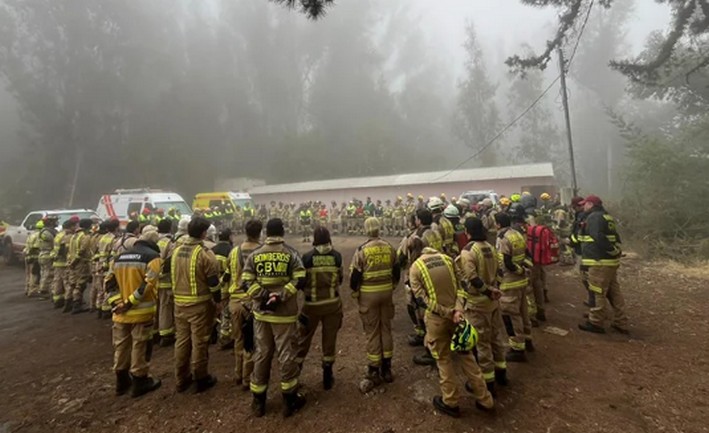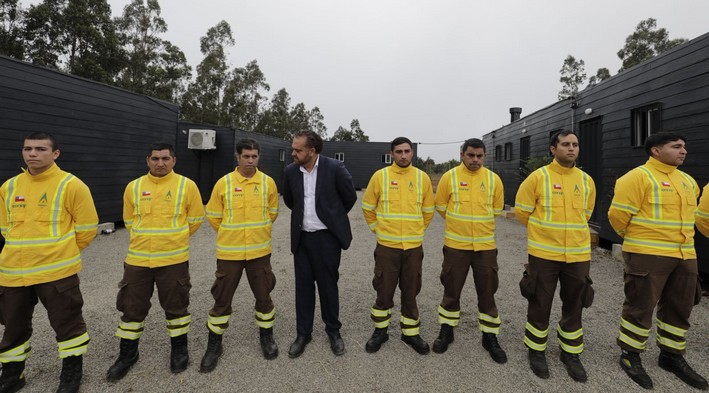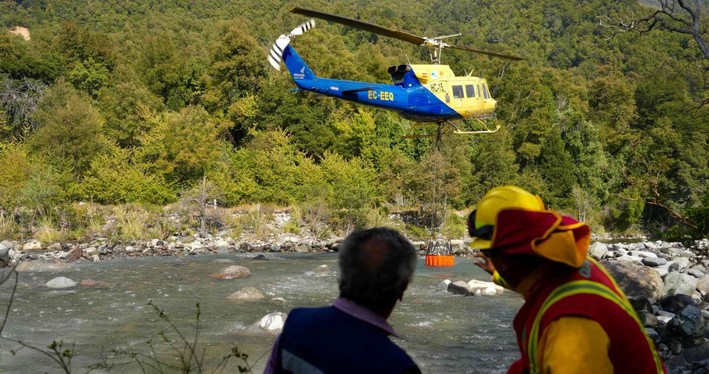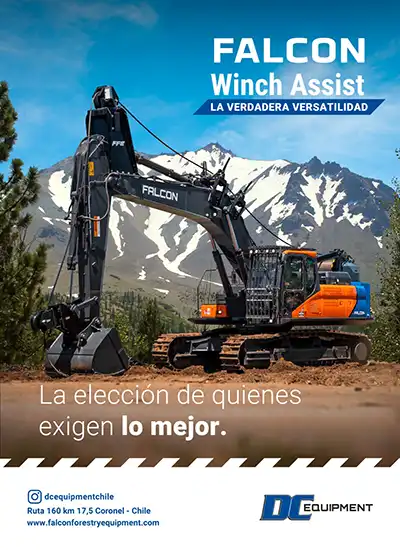“Cal Fire”: The Firefighter’s Recipe for Battling Wildfires in California
Daniel Berlant, Chief of the California Department of Forestry and Fire Protection (Cal Fire), is in the country to share experiences and expand collaboration agreements between his organization and Chile ahead of the upcoming wildfire season.
If we look at the map and compare Chile and California, their extreme zones and diverse climates are quite similar. So much so that even the problems both regions face when humidity drops and temperatures rise are alike. Wildfires have increased in number and intensity over the last decade, and one of the major concerns for both sides is figuring out how to prevent their occurrence and control their spread, which intensifies in our country in the coming months.
That’s why Daniel Berlant, Chief of the California Department of Forestry and Fire Protection, also known as “Cal Fire,” is in Chile. He is responsible for enforcing fire codes, disaster prevention, and public education. He served as the primary spokesperson for his agency for nearly two decades, providing critical information to the public about wildfires and fire safety.
This is his second time in the country. The first was in 2016, when Cal Fire and Chile’s National Forestry Corporation (Conaf) signed their first memorandum of understanding to begin exchanging ideas and resources to strengthen both forces against the threat of wildfires. This time, the Chile California Council organized a visit by authorities and experts from the U.S. state, who will also participate in a seminar on wildfires and emergency management at the Ministry of Foreign Affairs building.
The meeting will focus on sharing knowledge and best practices, as well as exploring the integration of modern technology strategies and wildfire prevention and mitigation efforts with Indigenous organizations and communities exposed to these devastating disasters. In an interview with Qué Pasa, Daniel Berlant discusses how California has faced increasingly severe wildfires during the summer months and how resources have become ever more critical to preventing catastrophes like those Chile has experienced in recent years.
How would you summarize California’s recent wildfire season?
In 2017, we saw the start of an incredibly devastating and massive series of wildfires. Then in 2018, and every year since, we’ve had some of the most destructive wildfires in our state’s history. But through that destruction, we’ve learned a great deal.
Is it possible to know exactly how exposed communities living near forested areas are to the ravages of wildfires?
There are about 5 million homes in California located in wildfire-prone areas. With a population of around 41 million, roughly 25% to 30% of our residents live in these high-risk zones.
Over the past decade, we’ve seen areas with previously lower risk levels become more vulnerable due to climate change and other factors like population growth, general forest health issues, and increased recreational activity in wildfire-prone areas. All these elements have led to more fires and higher risks in places that traditionally didn’t face such threats.
What impact do you think climate change will have on the frequency and severity of wildfires in the future, considering both California and Chile?
Climate change is one of the primary factors in California’s wildfire crisis. We’re seeing record-high temperatures, more frequent heatwaves, longer summer months, and an increase in dry lightning events. These extreme weather conditions have significantly extended our fire season.
Research from the University of California found that, on average, our fire seasons are now 75 days longer than in the 1970s. In just five decades, the wildfire season has grown by over two months—nearly double. This expansion means that by the end of our typical fire year, which peaks in the fall months of September and October, conditions are even drier for over two additional months, making those months even more extreme.
In Chile, one of the goals for achieving carbon neutrality is increasing forested land to boost timber use in construction and reduce the carbon footprint from concrete production. Do you think this could increase wildfire risks in Chile?
I can’t speak specifically about Chile, but in California, our forested lands have been overgrown with brush and too many trees. With the extreme weather conditions I mentioned, we’re seeing drought stress—less water for trees to absorb, leading to competition among them. This makes them susceptible to pests like bark beetles, resulting in widespread tree mortality.
Millions of trees—over 100 million in the last decade—have died in California, creating vast fuel for wildfires. Our strategy has been to remove as many dead trees as possible and thin forests so the remaining trees are stronger and healthier.
We’ve actively worked to grow our timber markets, reviving what was once a strong industry in California before international imports took over. We’re focusing on using this wood for construction, energy, and other forest products—key goals in recent years.
What key lessons from California’s wildfire management could be applied in Chile?
We’ve made major investments in firefighting resources—more firefighters, more aircraft. Our fleet now includes over 60 firefighting planes, including new Black Hawk helicopters, and we’ve retrofitted military-grade C-130s into air tankers.
We’ve also invested in night-flying helicopters for 24/7 firefighting. Another focus is intelligence-gathering: a network of nearly 1,000 real-time cameras across California, some with AI, to detect fires and speed up response times.
What’s your view on international collaboration in wildfire fighting? What role could Chile play?
When we visited Chile, we expected to share our successes, but we actually learned from Conaf’s work—like their partnerships with tribal leaders and community-led prevention efforts—which we’ve since tried to adopt.
Now, we’re eager to return, share updates on our progress, and learn from Chile’s challenges and innovations to bring back ideas.
We’ve expanded partnerships with Mediterranean-climate countries, too, aiming to share knowledge, resources, and support in wildfire management.
Could you share effective community preparedness and mitigation strategies for Chilean communities?
California’s strict building codes (since 2008) and defensible space requirements (clearing vegetation around homes) have significantly reduced home losses. Community planning—like ensuring wide roads for fire trucks and multiple neighborhood exits—is also critical.
Fuel breaks or “green belts” (golf courses, natural reserves) between forests and homes further reduce risks. Combined, these strategies have proven effective: post-2008 neighborhoods survive wildfires far better.
How do you handle public education on wildfire prevention, and what recommendations do you have for Chile?
In California, we emphasize resident preparedness, though urban transplants often lack awareness. We fund local fire safety councils to foster neighbor-to-neighbor education—a highly successful model.
Source:La Tercera

















